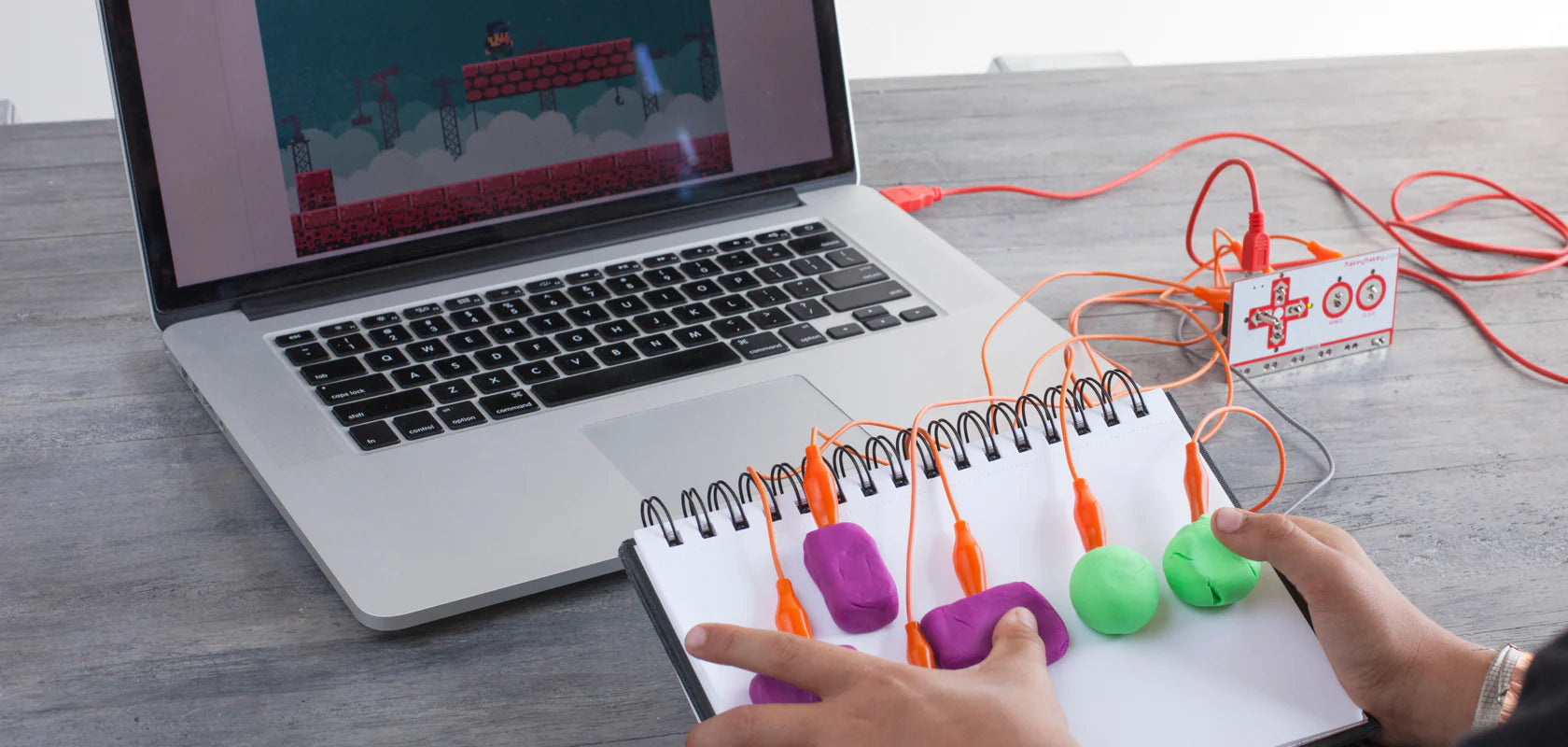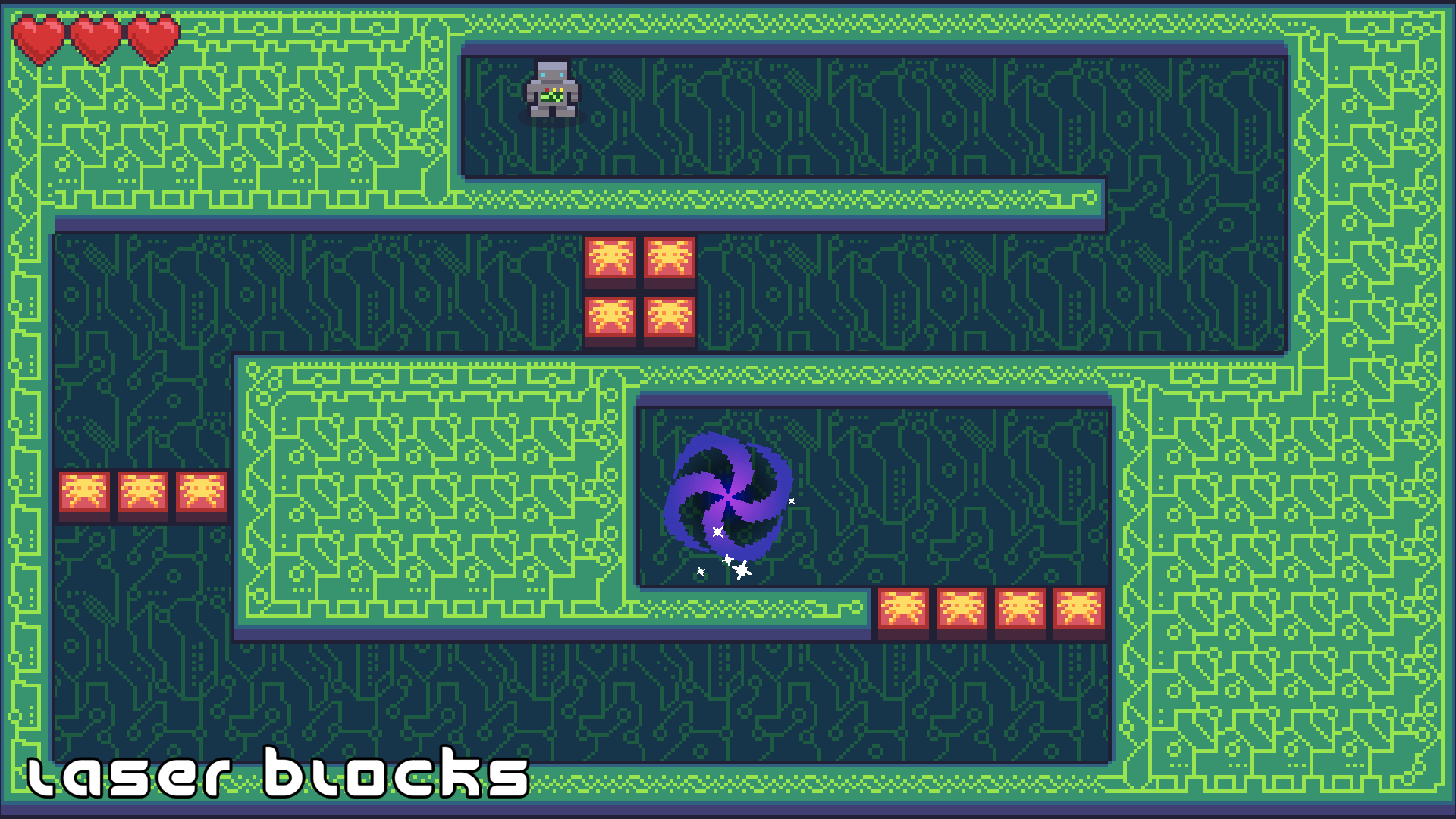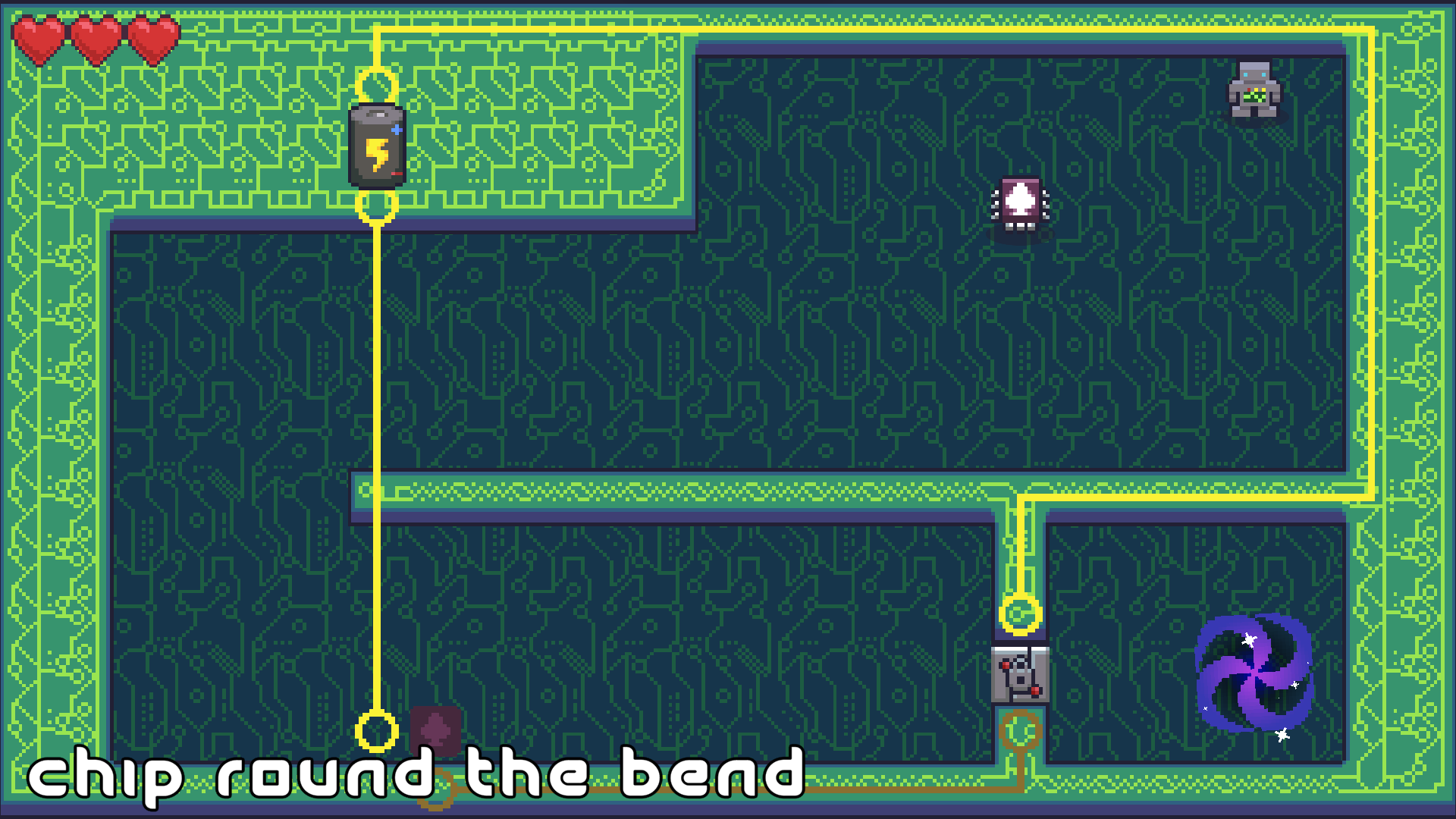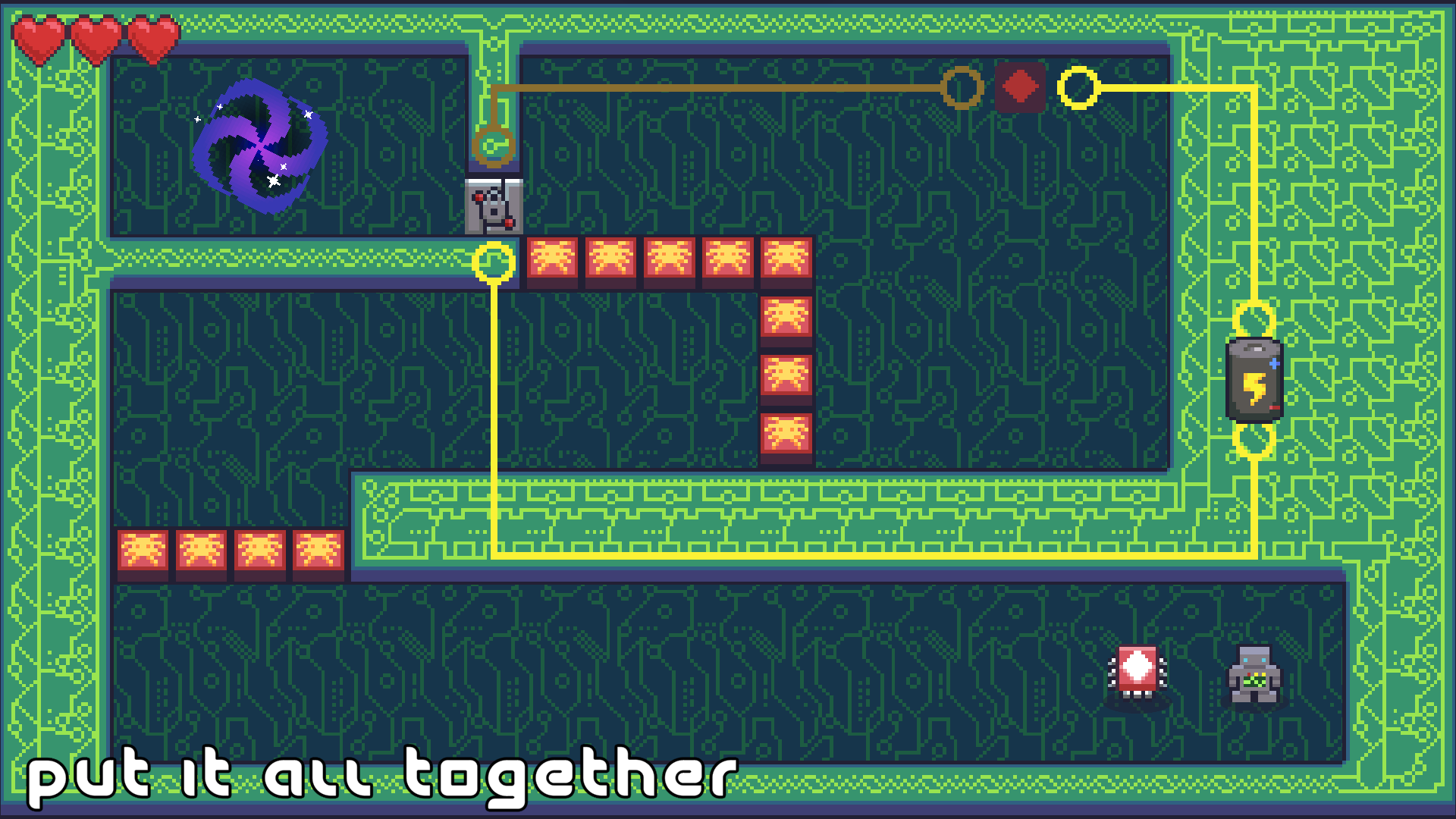Hey everybody! JAEOStudios has recently released our most recent project, SFA STEM Circuit Challenge 2, for free, along with it's source code! To celebrate, I'll be posting some devlog installments about the development of SFA STEM Circuit Challenge 2 (SSCC2), to give some insight behind my design decisions with the game!
THE STRUGGLE
SSCC2 is designed first and foremost as a lightly educational title. I designed the game in collaboration with the Stephen F. Austin State University STEM Center for use in a module that they do related to constructing circuits. They use this device called a 'Makey Makey', which gets plugged into a computer as a power source, and acts as a controller that kids can wire up themselves to play the game.
 Makey Makey device wired to Play-Doh in the shape of a controller
Makey Makey device wired to Play-Doh in the shape of a controller
We built the first SFA STEM Circuit Challenge to be an easy game to play with the controls on a Makey Makey. Beforehand, websites were used to simulate a piano that students could use, but this didn't really engage students as much as, well, an entire video game. Trying to source an external game would be possible, but would be complicated with downloads and licensing, so I decided I'd make a small project to help with the activity, mostly just for fun!
If you've ever been around kids playing games for the first time, you'll know what some of the major concerns are. First off, not every kid knows how to read just yet. This makes text-based tutorials or other game mechanics a no-go. A project like this might not even be used with kids who could speak English, something I didn't think about until I had an ESL class come in to do the activity with the game. So, this game needed to be able to explain mechanics in a way without verbally explaining them. How do you design a game that tells the player what to do, without telling the player what to do?
CRITICAL DESIGN CHOICES
When I was designing SSCC2, there are a few rules that I had in mind while coming up with the rules the game would play by.
- Nothing time sensitive: There are no enemies with independent movement timers in SSCC2, or level timers, or the requirement to move something in a certain amount of time before it explodes or something like that. This gives child players more time to look at the situation and consider all of the possible options they have, without pressure or stress of failure. It also encourages questions to instructors and collaborations with other students, because they can take a break to do these things without worry. (It also means I don't have to program a pause menu! Score!)
- Everything that happens in game must be due to player actions: Nothing in SSCC2 is influenced by anything but the player's movement. The player pushes chips, completes circuits, and breaks blocks all on their own. The only exception to this is circuits opening doors, but that's done by the player completing a circuit, which is still their action. This rule makes sure that there's no confusion by the player as to what 'did' an action. Everything happens from their input, and they are in total control of the game's state every step of the way. Many games have similar versions of this rule, such as Minecraft, where nearly every action that impacts the world must be initiated by a player (per Minecraft Game Design by Jens Bergensten).
- No random chance: Similarly to the last rule, nothing in this game should rely on RNG (random number generation). Kids might not even know that randomness is a thing as a concept, and so none of the game mechanics should rely on this. All actions happen directly due to player input.
With that all said, let's look at some level design in action to talk about how we design levels to teach our players.
THE FIRST LEVEL PACK
The first level pack of SSCC2 is the introduction every student will have to this game, so this is where I introduce most of the mechanics non-verbally. I'm gonna break down some of the choices that I made in designing these levels to show how they're supposed to help students learn to play!
A video playthrough of the first level pack can be seen here!
LEVEL 1-2: LASER BLOCKS
The first level beyond simple movement to introduce a mechanic is level 2, the laser blocks level. The name here is a hint, but even if the player can't read the name, the game intentionally avoids any other mechanics to get the player to focus on learning the laser blocks. On a Makey Makey, the only inputs the player has are the four directions, a space input, and an (unused) click input. This leaves the player with only one option other than movement to deal with the attention attracting red blocks. Even if they aren't facing a direction where they could see the laser fire when they click on space, the sound effect and particles show that something different happens when you click space. This hopefully clues the player into using this on the red blocks to progress.
 Level 1-2: Laser Blocks - SFA STEM Circuit Challenge 2 | JAEOStudios
Level 1-2: Laser Blocks - SFA STEM Circuit Challenge 2 | JAEOStudios
LEVEL 1-3: COMPLETING THE CYCLE
Level 3 introduces the chips and circuits to the game. This is the 'puzzle' part of this puzzle game, where the players have to consider how to move the chips into the correct place to open doors. Of course, a player might not know that yet, so let's show them that as obviously as possible. A chip that cannot be pushed into the wrong location. Here we force the player into a successful circuit completion so they can see their objective, and what completing a circuit leads to, the goal! This shows the main mechanic without giving players a chance to be confused, assuming they exhaust all options. Even if a player is unfamiliar with games, this hopefully shows the link between chips, slots, and the goal in most levels.
If the game is used in a lesson about circuits by an instructor, they may also hopefully recognize imagery such as the battery and lightning bolt to tie in what they're learning about electricity. Much of the time, simple icons and graphics can help communicate what's going on better than words. This is the same reason that the different chips in the levels have different symbols that match to their slot.
 Level 1-3: Completing the Cycle - SFA STEM Circuit Challenge 2 | JAEOStudios
Level 1-3: Completing the Cycle - SFA STEM Circuit Challenge 2 | JAEOStudios
LEVEL 1-4: CHIP ROUND THE BEND
This level tasks the player with carrying a chip around a bend in the wall to get it to its slot. The goal is to pull from the previous level's chip pushing to help them know what to do when given full control of the chip. We also let them find out that, if they try to, they can push the chip out of the slot they just put it in, and they'll need to go back to get the chip in place. This is a concept that comes back in later levels, so we introduce it early here.
This stage was also specifically designed to rectify a design issue with the first SFA STEM Circuit Challenge. It shows that chips can be pushed over wires, but not walls. This was a problem with the original SFA STEM Circuit Challenge, as the game only required you to do that at one point, late in the game, where players might instead mix up the two chips they needed to push around and place them in the wrong spot. Make sure that you study your work while other people play, because otherwise mistakes or miscommunications to the player like the one that I made there can slip by super easily!
 Level 1-4: Chip Round the Bend - SFA STEM Circuit Challenge 2 | JAEOStudios
Level 1-4: Chip Round the Bend - SFA STEM Circuit Challenge 2 | JAEOStudios
LEVEL 1-5: PUT IT ALL TOGETHER
For the first level pack's final stage, we mix together all of the concepts. It's important to reinforce learned concepts in any game's tutorial, but especially when you know that your target demographic is kids. Here, we task the player with pushing a chip around a corner, completing a circuit, and breaking the red blocks, all at the same time! This is all about showing the player how to intermingle the skills they've learned. "How do I break a block while pushing a chip? Well, I've gotta move out of the way without putting the chip against the wall!" It's those sorts of questions of interaction that we want to get out of the player when putting it all together!
 Level 1-5: Put it All Together - SFA STEM Circuit Challenge 2 | JAEOStudios
Level 1-5: Put it All Together - SFA STEM Circuit Challenge 2 | JAEOStudios
THE WRAP UP
As you can see, there's a lot of smaller level design and game design decisions that go into making a game easy to approach for a younger, non game-playing audience! Starting a project consciously aware of your target audience helps you to develop these rules early, rather than having to go back to change your game to put them in. Of course, not every game needs this! I can't imagine a turn-based RPG abiding by these rules, it just wouldn't make sense, so please keep in mind this is specifically talking about design for these early childhood centered games (although parts of it can be applied to other genres). I hope that this has been interesting and if you have any suggestions or examples of these design principles in other games, drop them down in the comments below!
If you'd like to play SFA STEM Circuit Challenge 2 for yourself, the game is free on PC, and has source code available on GitHub. More information can be found here: https://jaeostudios.odoo.com/sscc2
That's all for now, thanks for listening to me ramble about my game! Hope to see you all back here, and never forget to play without limits!
- Mikey, SSCC2 Developer
Designing for Education - SFA STEM Circuit Challenge 2